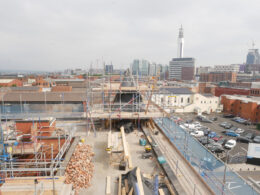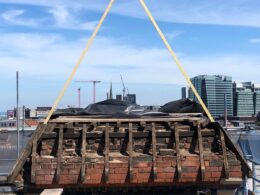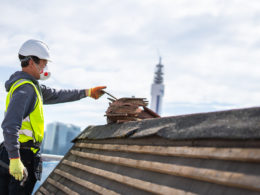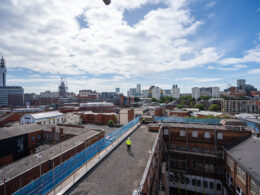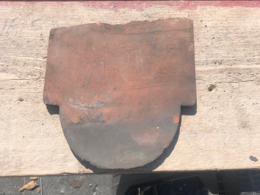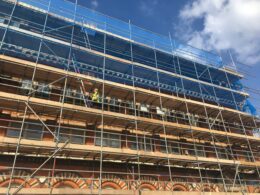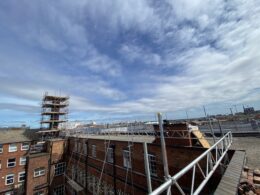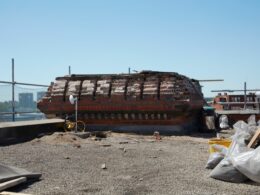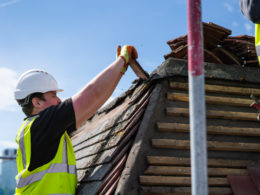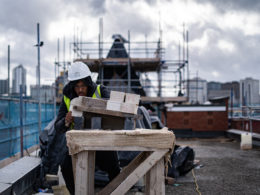The building
One of the most imposing buildings in the Jewellery Quarter, the Grade II* listed Argent Centre building, was designed by Birmingham architect John George Bland. On the corner of Legge Lane and Frederick Street, it was built in 1862 for WE Wiley, manufacturer of gold pens and propelling pencils.
Highly decorative and influenced by Lombardy Renaissance architecture, the building has an innovative fireproof construction. Each storey was made with arches formed by hollow bricks containing wrought iron tie rods and the floors were laid with bricks rather than timber. This meant additional floors could be added at a later date and two more storeys were added twelve months after the basement and ground levels were built. It was unique as it also housed Turkish Baths.
The building was known as the Albert Works, probably as it was opposite the Victoria Works. Later it became the Argent Works, after silversmiths W.J. Myatt & Co. Since 1984, the building has been owned by Midlands Industrial Association Ltd, a Community Benefit organisation that provide managed workspaces. As such it is home to many different businesses including the Pen Museum which focusses on the legacy of Birmingham’s 19th Century pen trade.
Restoration project
Supported by a JQTH grant, conservation work was carried out across the building, with repairs to stone and brickwork, the roof, chimneys, and windows. Ornamental details on features like column capitals had actually been removed to avoid fragile pieces of stone falling off but these were re-carved and returned to the façade.
The decorative turrets, which had been removed, possibly in the mid-20th Century, were restored to the building. There was no photographic evidence to show that they had ever been built, and only a few sketches and engravings of the building that featured the turrets. The decision was taken to reinstate the pyramidal turrets to rectify the “serious adverse impact on the appreciation of the building”, which was identified in the Statement of Significance by James Edgar, Historic Buildings Consultants (2015).
The process of rebuilding the turrets was extremely challenging as the bases were not square. This meant that the roof of each turret would need to have its own pitch and width, causing some problems when aligning the tiles. Local firm ‘Dreadnought Tiles’ were able to match the semi-circular terracotta tiles known as ‘club tiles’ that were found in the original turret bases. A new stainless-steel finial was made, based on the 1863 engraving.
The repairs were undertaken throughout 2020, achieving completion in February 2021. The project won the Birmingham and West Midlands Victorian Society Conservation Award in 2021.
A Film by Blue Monday
Photos from during the project
Further information and resources
The restoration works at the Grade II* listed Argent Centre on Frederick Street have now been revealed after a year long project.
Blog post 28 September: Reinstating Turrets at the Argent CentreBesides repairs to the brickwork, stonework and windows, striking turrets are being redesigned and rebuilt as part of the project.
Blog post 11 August: Argent Centre UpdateScaffolding at the Argent Centre is up and despite the temporary setback of Covid-19 lockdown, works are progressing well.
Argent Centre Research PageFind out more about the history of the Argent Centre, a gateway building to the heart of the Jewellery Quarter.
The Pen MuseumLocated in the Argent Centre, The Pen Museum focuses on the important legacy of Birmingham’s 19th Century pen trade and its significant contribution to improving literacy throughout the world.












